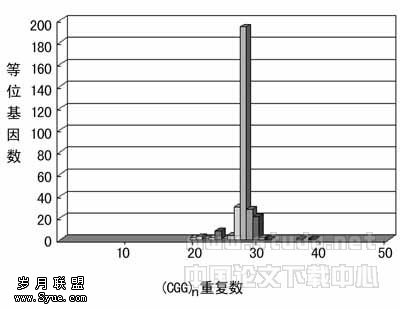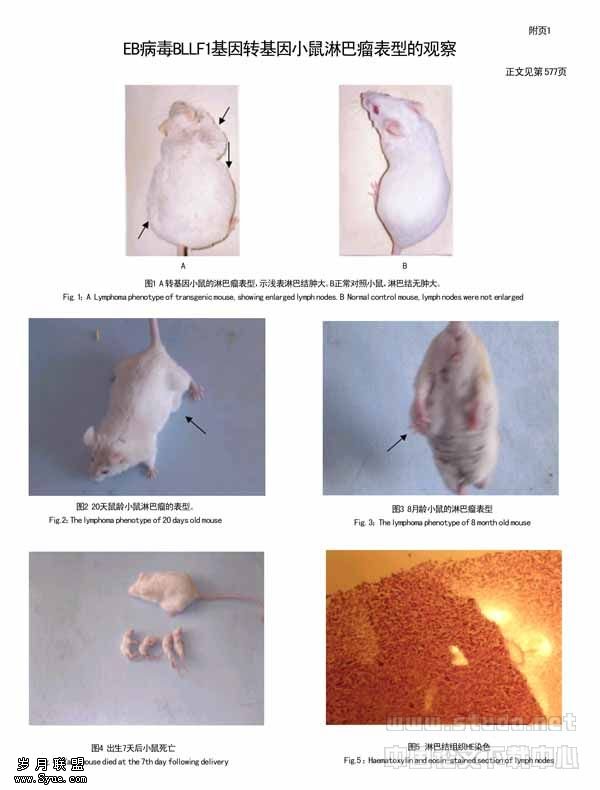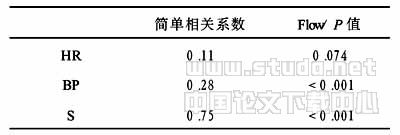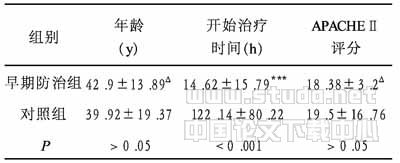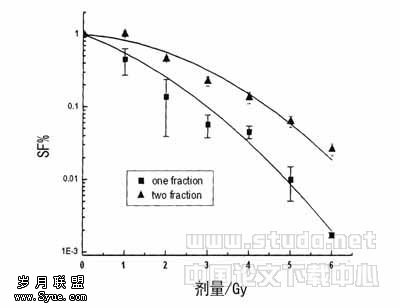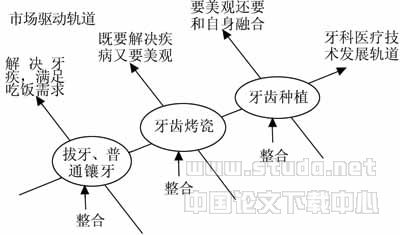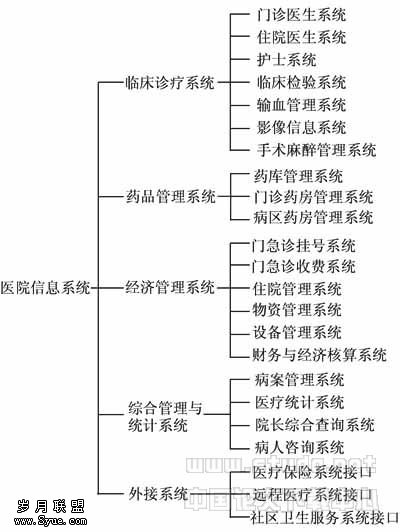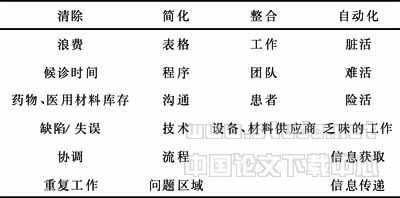小鼠胚胎干细胞自我更新的信号调控机制
【摘要】 小鼠胚胎干细胞是一种全能干细胞,具有体内体外全能分化特性。体外培养时能够进行自我更新,即细胞通过对称分裂在维持全能性不丢失的情况下细胞数目增多。全能性维持受多条信号通路的调控,其中gp130下游的JAK-STAT3及PI3K通路的活化能维持胚胎干细胞的自我更新,而SHP2-Ras-ERK的激活则促使胚胎干细胞分化。无血清条件下BMP4激活的通路与JAK-STAT3联合作用可保持胚胎干细胞的全能性。此外,Wnt信号通路的活化也参与对胚胎干细胞的自我更新的调控。总之,多种信号通路形成的精确调控小鼠胚胎干细胞的自我更新与分化。本文主要综述gp130在小鼠ES细胞增殖过程中作用,包括JAK-STAT3通路活化抑制小鼠ES细胞分化,PI3K通路活化维持ES细胞的自我更新和SHP-2-Ras通路活化促进ES细胞分化,以及其他信号通路对小鼠ES细胞自我更新的影响,包括无血清条件下BMP联合LIF能维持ES细胞的高度自我更新,Wnt信号通路活化促进ES细胞自我更新。
【关键词】 胚胎干细胞 自我更新 信号通路 全能性
Signaling Pathways Regulating Self-renewal of Mouse Embryonic Stem Cells —— Review
AbstractMouse embryonic stem cells (ES cells) are pluripotent in that they can give rise to almost all the cell types in vitro and in vivo. Also, they can sustain self-renewal in vitro owing to symmetrical mitosis, i.e., only the cell number increases while the daughter cells remain pluripotent. Self-renewal and pluripotency of ES cells are under stringent regulation of several signaling pathways. Activation of either JAK-STAT3 or PI3K, the downstream cascade of gp130, can maintain the self-renewal of ES cells, while phosphorylation of another gp130-related branch, SHP2-Ras-ERK, drives the differentiation. BMP2/4-mediated signaling is capable of suppressing the differentiation of ES cells in collaboration with activated JAK-STAT3 under serum free culture conditions. Other signaling such as Wnt also contributes to the self-renewal of ES cells. Generally, the network, which is composed of various signaling pathways, modulates the self-renewal and differentiation of mouse ES cells precisely. This review focuses on the role of gp130 in proliferation of mouse ES cells including inhibitory effect of JAK-STAT3 pathway activation on differentiation of mouse ES cells, maintenance effect of PI3K pathway activation on self-renewal of ES cells, promotive effect of SHP-2-Ras-ERK pathway activation on differentiation of ES cells, and influence of other signaling pathways on self-renewal of mouse ES cells, including maintenance effect of BMP combination with LIF under serum free culture conditions on self-renewal of ES cells and promotive effect of Wnt pathway activation on self-renewal of ES cells.
Key wordsembryonic stem cell; self-renewal; signaling pathway; pluripotency
小鼠胚胎发育过程中的分化最早发生于桑葚胚晚期,分化发生后胚胎分为两部分:内细胞团(inner cell mass, ICM)和滋养层(trophoblast)。ICM细胞具有全能分化特性,可继续分化产生内、外、中三个胚层的所有细胞,并最终形成完整的胚胎[1];滋养层则为胚胎发育提供营养。小鼠胚胎干细胞(embryonic stem cells, ES细胞)即来源于3.5天的ICM[2]。当注射到孕鼠囊胚时,ES细胞具有与ICM细胞相似的全能分化特性[3]。体外培养时,ES细胞具有自我更新(self-renewal)能力,即细胞进行对称性分裂,表现为数目增长并维持全能分化特性[4]。基于上述特点,ES细胞不仅是基因功能研究的有力工具, 而且其分化细胞在糖尿病和帕金森病等动物模型上也取得了较好的效果[5,6]。 人 ES 细胞与小鼠ES细胞具有相似的生物学特点,即自我更新和多向分化[4,7,8]。ES细胞的培养分化系统及分子机制研究是其应用于组织工程和细胞治疗的基础[9],因而具有重要意义。ES细胞的自我更新与定向分化受不同信号通路的调节,各信号通路之间又相互作用,共同调控ES细胞的体外增殖。本文重点就小鼠ES细胞自我更新的调控信号进行综述。
gp130在小鼠ES细胞增殖过程中的作用建系之初,人们注意到小鼠ES细胞只有与小鼠胚胎成纤维细胞(mouse embryonic fibroblast, MEF )共培养才可以维持其自我更新的特性;若失去MEF的支持则立即发生分化,说明MEF能促进ES细胞增殖并/或抑制其分化。之后的研究表明:MEF通过分泌白血病抑制因子(leukemia inhibitory factor, LIF)抑制ES细胞的分化[10,11]。LIF属于IL-6细胞因子家族,该家族细胞因子主要有IL-6、IL-11、LIF、CNTF、CT-1、OSM等。该家族不同细胞因子具有相同或相似的生物学效应。例如,OSM,CNTF,CT-1及LIF都能抑制ES细胞分化。ES细胞不表达IL-6的受体,故IL-6不能抑制ES细胞分化,但当IL-6和其可溶性受体共同作用于ES细胞时即可以抑制ES细胞的分化[12]。IL-6家族不同因子具有相同生物学效应的分子基础是它们共同的受体gp130[13]。gp130是一种跨膜蛋白,属细胞因子受体超家族,本身无激酶活性,其介导的信号传递依赖于细胞内一种非受体型酪氨酸(Tyr)蛋白激酶JAK (Janus kinase)。gp130与配基结合引起细胞内的不同JAK分子之间的靠近和相互磷酸化,活化的JAK继而使gp130特定位点的Tyr残基磷酸化。继而,下游信号分子(如:STAT,SHP-2)则依赖SH2(Src homology 2)结构域与gp130上磷酸化的Tyr残基结合,而JAK则能够使与gp130 结合的该信号分子磷酸化而活化[14]。STAT3 (signal transducer and activator of transcrip- tion) 即是JAK下游具有SH2结构的主要信号分子,当其与gp130上的磷酸化Try结合后,JAK可以将其磷酸化,继而进入核内调节相关基因的转录和表达。除JAK-STAT3通路外,gp130还可以激活PI3K通路及SHP-2-Ras-ERK通路。在细胞因子的刺激下,SHP-2通过SH2结构域与gp130上磷酸化的Tyr残基结合,则SHP-2被磷酸化并为下游的连接蛋白提供结合位点,继而活化Ras并进一步激活下游的ERK。ERK活化后直接作用于细胞质的靶分子或转移到细胞核内调节基因转录。此外,活化的Ras还可以通过PI3K的催化亚基p110将PI3K激活,从而使PI3K通路活化[15]。
JAK-STAT3通路活化抑制小鼠ES细胞分化
当LIF作用于小鼠ES细胞时,首先与细胞膜上的LIF受体(LIFR)结合形成二聚体,LIF-LIFR二聚体再与gp130结合成为三聚体。gp130通过上述机制使JAK-STAT通路中的STAT3活化[14]。体外培养时,STAT3的活化是小鼠ES细胞自我更新的必要条件[16,17]。研究表明,受体gp130上有4个YXXQ序列,该序列内Tyr磷酸化是STAT与之结合的必需条件。gp130上这些结合位点缺失或突变,使STAT3不能与之结合并被活化,则ES细胞的自我更新不能继续。将STAT3第705位Tyr位点替换为Phe即形成突变体STAT3F, STAT3F可以同正常STAT3竞争gp130上的结合位点,以及同正常STAT3形成没有活性的二聚体,从而抑制STAT3的活化。因此,与正常的ES细胞相比较,携带有STAT3F基因的ES细胞在培养过程中更易发生分化[16]。同样,当用STAT3的反义寡核苷酸转染ES细胞,细胞内STAT3表达的量降低也可促进ES细胞分化[17]。上述研究表明:STAT3的活化可以抑制小鼠ES细胞的分化。
PI3K通路活化能够维持ES细胞的自我更新
最近的研究表明,LIF还可以通过gp130激活磷酸肌醇-3激酶(phosphoinosidide 3 kinase, PI3K)通路,该通路的活化对小鼠和人ES细胞全能性的维持都发挥重要作用[18,19]。PI3K可以催化PI(4,5)P2的磷酸化形成PI(3,4,5)P3,后者则促使其下游的PDK1将Akt磷酸化。Akt磷酸化后作用于下游底物并进一步调节细胞各项生理活动。当LIF作用于小鼠ES细胞时,可以激活PI3K通路使细胞内Akt磷酸化水平升高,增强ES细胞的自我更新并减少细胞分化。相反,当用PI3K的特异性抑制剂LY294002阻断该通路,或用基因突变的方法使PI3K的催化亚基失活,则ES细胞内Akt的磷酸化水平降低,同时细胞内ERK的活化增强。在这种情况下,ES细胞自我更新下降而分化增加[18]。实际上,PI3K信号通路对小鼠ES细胞的增殖调控作用最初是在Pten基因敲除的ES细胞得到阐明的[20]。肿瘤抑制分子PTEN是一种磷酸酶,可使PI(3,4,5)P3去磷酸化,进而对PI3K信号通路起负调控作用[21]。研究发现,PTEN-/-ES细胞内由于PTEN的缺失,细胞内PI(3,4,5)P3保持在高水平,因此其下游信号分子Akt也一直保持高水平的活化状态,故细胞增殖加速,并同时伴随着细胞凋亡的减少[20]。
SHP-2-Ras-ERK通路活化促进ES细胞分化
除JAK-STAT3及PI3K通路外,SHP-2-Ras-ERK是gp130下游的另一条主要信号通路。蛋白磷酸酶SHP-2是gp130下游一种含有SH2结构域的信号分子,其介导Ras-ERK与gp130之间的连接,最终ERK的活化能够促进ES细胞分化。SHP-2-Ras-ERK通路的活化对ES细胞的自我更新起负调控作用,因此阻断该通路的活化可以促进ES细胞的自我更新。如将gp130受体上SHP-2结合位点即第118位Tyr缺失,使SHP-2不能与gp130结合,从而阻断了由SHP-2介导的gp130与下游信号分子之间的连接,当LIF作用于带有该基因突变的ES细胞时不能激活Ras-ERK,并同时伴随细胞内STAT3的活化时间延长[22],因此ES细胞的自我更新能力得到加强。同样当SHP-2与其下游Ras-ERK之间的连接蛋白缺失或者在ES细胞内表达抑制型的H-Ras[S17N]都可阻断该信号通路下游信号分子ERK的活化,这些变化也可增强ES细胞的自我更新[23]。相反,若在ES细胞内表达组成型活化基因H-Ras[G12V]使该通路持续性活化,则携带有该基因的ES细胞自我更新不能继续[23,24]。此外,SHP-2-Ras-ERK通路阻断后ES细胞的分化出现异常。如SHP-2蛋白氨基端46到110位氨基酸缺失后,SH2结构域不能与下游的连接蛋白作用。该基因突变的小鼠ES细胞不能向造血细胞和成纤维细胞分化[25]。而当SHP-2的71-121位氨基酸缺失后,ES细胞的造血分化延迟并减少[26]。由此可见,SHP-2-Ras-ERK通路是ES细胞正常分化必需的,其活化能够促进ES细胞的分化。总而言之,当LIF作用于ES细胞时,可以通过gp130同时激活JAK-STAT3、PI3K及SHP-2-Ras-ERK通路。只有三者之间保持精确的平衡,则ES细胞的自我更新才能保证。综上所述,ES细胞内依赖gp130的信号通路对ES细胞自我更新与分化的调控可以归纳为下图。
其他信号通路对小鼠ES细胞自我更新的影响最近的研究表明,除LIF外,其他信号通路,如骨形态发生蛋白(bone morphogenetic protein, BMP)及Wnt通路,对ES细胞的自我更新也非常重要。
无血清条件下BMP联合LIF能够维持ES细胞的高度自我更新
无血清培养体系内,在LIF作用下虽然大部分ES细胞能够维持自我更新,但仍会有少量细胞分化为神经细胞,说明LIF并不能完全阻断小鼠ES细胞的分化,需要与其他细胞因子联合作用来维持ES细胞自我更新,特别是能够抑制ES细胞向神经细胞分化的因子[27]。而BMP能够抑制ES细胞向神经细胞的分化,提示LIF与BMP联合作用可能会完全阻断ES细胞分化。研究表明,BMP4与LIF共同作用确实可以使ES细胞保持高度的自我更新。其作用机制是,BMP4/2通过激活Smad通路诱导蛋白Id的表达,Id抑制ES细胞向神经细胞的分化,同时LIF激活的JAK-STAT3通路则抑制ES细胞沿其它方向分化。因此,二者联合作用于ES细胞时,可以彻底阻断其分化[28]。另外的研究发现,BMP4还可通过抑制ES细胞内ERK的磷酸化[29]抑制ES细胞分化。如Burdon等[22]所述,阻断ERK的磷酸化可以促进ES细胞的自我更新,此处用ERK上游激酶MEK的抑制剂PD98059作用于ES细胞阻断ERK的磷酸化,可以得到与BMP4相同的结果。
Wnt信号通路的活化促进ES细胞自我更新
Wnt蛋白与Frizzled家族受体结合或者特异性抑制细胞内GSK3β都可以活化Wnt通路,引起下游分子β-连环素(β-catenin)的磷酸化,并进入细胞核调节相关基因的转录。此前研究发现,Wnt信号通路的活化在维持多种成体干细胞(如造血干细胞和皮肤干细胞)的多能性方面发挥重要作用,因此它的活化是否与ES细胞的全能性相关引起了人们关注。研究表明,未分化ES细胞内Wnt通路处于活化状态,并且当用GSK3β的特异性抑制剂作用于ES细胞时,引起β-catenin依赖的Wnt通路目的基因表达上调,细胞的自我更新能力提高。由此推测,Wnt通路的活化对ES细胞全能性的维持起重要作用[30]。值得注意的是,ES细胞内PI3K的活化能够抑制GSK3β的活性,但β-catenin的活性并不受影响[18]。因此,依赖β-catenin的Wnt通路活化对ES细胞的自我更新是否为必需仍有待于进一步确定。上述调控ES细胞自我更新的通路多由外界因素激活。此外,某些转录因子(如Oct4和Nanog)也参与ES细胞的全能性维持和分化调控,但它们的表达也受外因调节。
结语
虽然利用小鼠ES细胞来源的分化细胞许多动物模型疾病取得了可喜的成果,然而人ES细胞的临床应用还面临诸多困难需要克服。对控制ES细胞自我更新机理的研究必将有助于这些问题的解决。
【】
1 Rossant J. Stem cells from mammalian blastocyst. Stem cells, 2001; 19:477-482
2 Evans MJ, Kaufman MH. Establishment in culture of pluripotential cell from mouse embryos. Nature, 1981; 292(5819):154-156
3 Beddington RS, Robertson EJ. An assessment of the develop- mental potential of embryonic stem cells in the midgestation mouse embryo. Development, 1989; 105:733-737
4 Keller GM. In vitro differentiation of embryonic stem cells. Curr Opin Cell Bio, 1995; 7:862-869
5 Soria B, Roche E, Berna G, et al. Insulin-secreting cells derived from embryonic stem cells normalize glycemia in streptozotocin-induced diabetic mice. Diabetes, 2000; 49:157-162
6 Kim JH, Auerbach JM, Rodriguez-Gomez JA, et al. Dopamine neurons derived from embryonic stem cells function in an animal model of Parkinson′ s disease. Nature, 2002; 418(6893):50-56
7 Itskovitz-Eldor J, Schuldiner M, Karsenti D, et al. Differentiation of human embryonic stem cells into embryoid bodies compromising the three embryonic germ layers. Mol Med, 2000; 6:88-95
8 Thomson JA, Itskovitz-Eldor J, Shapiro SS, et al. Embryonic stem cell lines derived from human blastocysts. Science, 1998; 282(5391):1145-1147
9 Doss MX, Koehler CI, Gissel C, et al. Embryonic stem cells: a promising tool for cell replacement therapy. J Cell Mol Med, 2004; 8:465-473
10 Williams RL, Hilton DJ, Pease S, et al. Myeloid leukaemia inhibitory factor maintains the developmental potential of embryonic stem cells. Nature, 1988; 336(6200):684-687
11 Smith AG, Heath JK, Donaldson DD, et al. Inhibition of pluripotential embryonic stem cell differentiation by purified polyeptides. Nature, 1988; 336(6200):688-690
12 Yoshida KI, Taga T, Saito M, et al. Targeted disruption of gp130, a common signal transducer for the interleukin 6 family of cytokines, leads to myocardial and hematological disorders. Proc Natl Acad Sci USA, 1996; 93:407-411
13 Heinrich PC, Behrmann I, Muller-Newen G, et al. Interleukin-6-type cytokine signaling through the gp130/Jak/STAT pathway. Biochem J, 1998;334(Pt 2): 297-314
14 Darnell JE Jr, Kerr IM, Stark GR. Jak-STAT pathways and transc-riptional activation in response to IFNs and other excellular signaling proteins. Science, 1994; 264(5164):1415-1421
15 Rodriguez-Viciana P, Warne PH, Dhand R, et al. Phosphati- dylinositol-3-OH kinase as a direct target of Ras. Nature, 1994;370(6490): 527-532
16 Niwa H, Burdon T, Chambers I, et al. Self-renewal of pluripotent embryonic stem cells is mediated via activation of STAT3. Genes Dev, 1998; 12:2048-2060
17 Ernst M, Novak U, Nicholson SE, et al. The carboxyl-terminal domains of gp130-related cytokine receptors are necessary for suppressing embryonic stem cell differentiation. Involvement of STAT3. J Biol Chem, 1999; 274:9729-9737
18 Paling NR, Wheadon H, Bone HK, et al. Regulation of embryo- nic stem cell self-renewal by phosphoinosidide 3 kinase-dependent signaling. J Biol Chem, 2004; 279: 48063-48070
19 Kim SJ, Cheon SH, Yoo SJ, et al. Contribution of the PI3K/Akt/PKB signal pathway to maintenance of self-renewal in human embryonic stem cells. FEBS Letters, 2005; 579: 534-540
20 Sun H, Lesche R, Li DM, et al. PTEN modulates cell cycle progression and cell survival by regulating phosphatidylinositol 3,4,5-trisphosphate and Akt/protein kinase B signaling pathway. Proc Natl Acad Sci USA, 1999; 96: 6199-6204
21 Chang F, Lee JT, Navolanic PM, et al. Involvement of PI3K/Akt pathway in cell cycle progression, apoptosis, and neoplastic trans- formation: a target for chemotherapy. Leukemia, 2003; 17:590-603
22 Burdon T, Stracey C, Chambers I, et al. Suppression of SHP-2 and ERK signaling promotes self-renewal of mouse embryonic stem cells. Dev Biol, 1999; 210:30-43
23 Cheng AM, Saxton TM, Sakai R, et al. Mammalian Grb2 regulates multiple steps in embryonic development and malignant transformation. Cell, 1998; 95:793-803
24 Yoshida-Koide U, Matsuda T, Saikawa K, et al. Involvement of Ras in extraembryonic endoderm differentiation of embryonic stem cells. Biochem Biophys Res Commun, 2004; 313: 475-481
25 Qu CK, Feng GS. Shp-2 has a positive regulatory role in ES cell differentiation and proliferation. Oncogene, 1998; 17:433-439
26 Chan RJ, Johnson SA, Li Y, et al. A definitive role of Shp-2 tyrosine phosphatase in mediating embryonic stem cell differentiation and hematopoiesis. Blood, 2003;102:2074-2080
27 Wilson SI, Edlund T. Neural induction: toward a unifying mechanism. Nat Neurosci, 2001; 4:1161-1168
28 Ying QL, Nichols J, Chambers I, et al. BMP induction of Id proteins suppresses differentiation and sustains embryonic stem cell self-renewal in collaboration with STAT3. Cell, 2003; 115:281-292
29 Qi X, Li TG, Hao J, et al. BMP4 supports self-renewal of embryonic stem cells by inhibiting mitogen-activated protein kinase pathways. Proc Natl Acad Sci USA, 2004; 101:6027-6032
30 Sato N, Meijer L, Skaltsounis L, et al. Maintenance of pluripo- tency in human and mouse embryonic stem cells through activation of Wnt signaling by a pharmacological GSK-3-specific inhibitor. Nat Med, 2004; 10: 55-63


